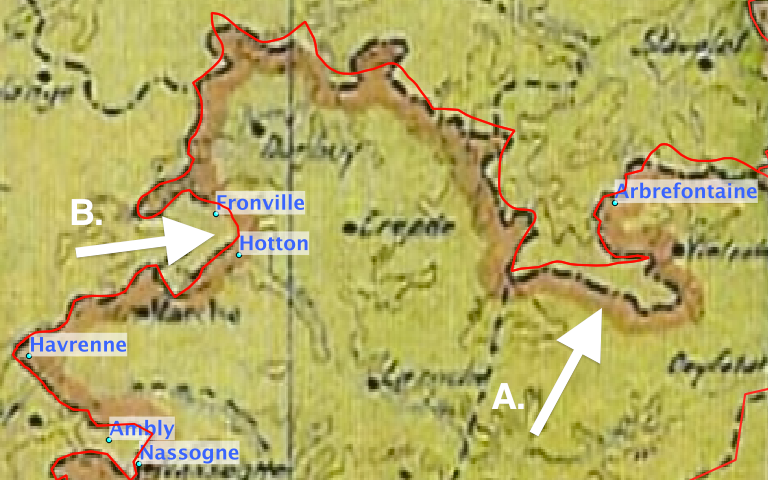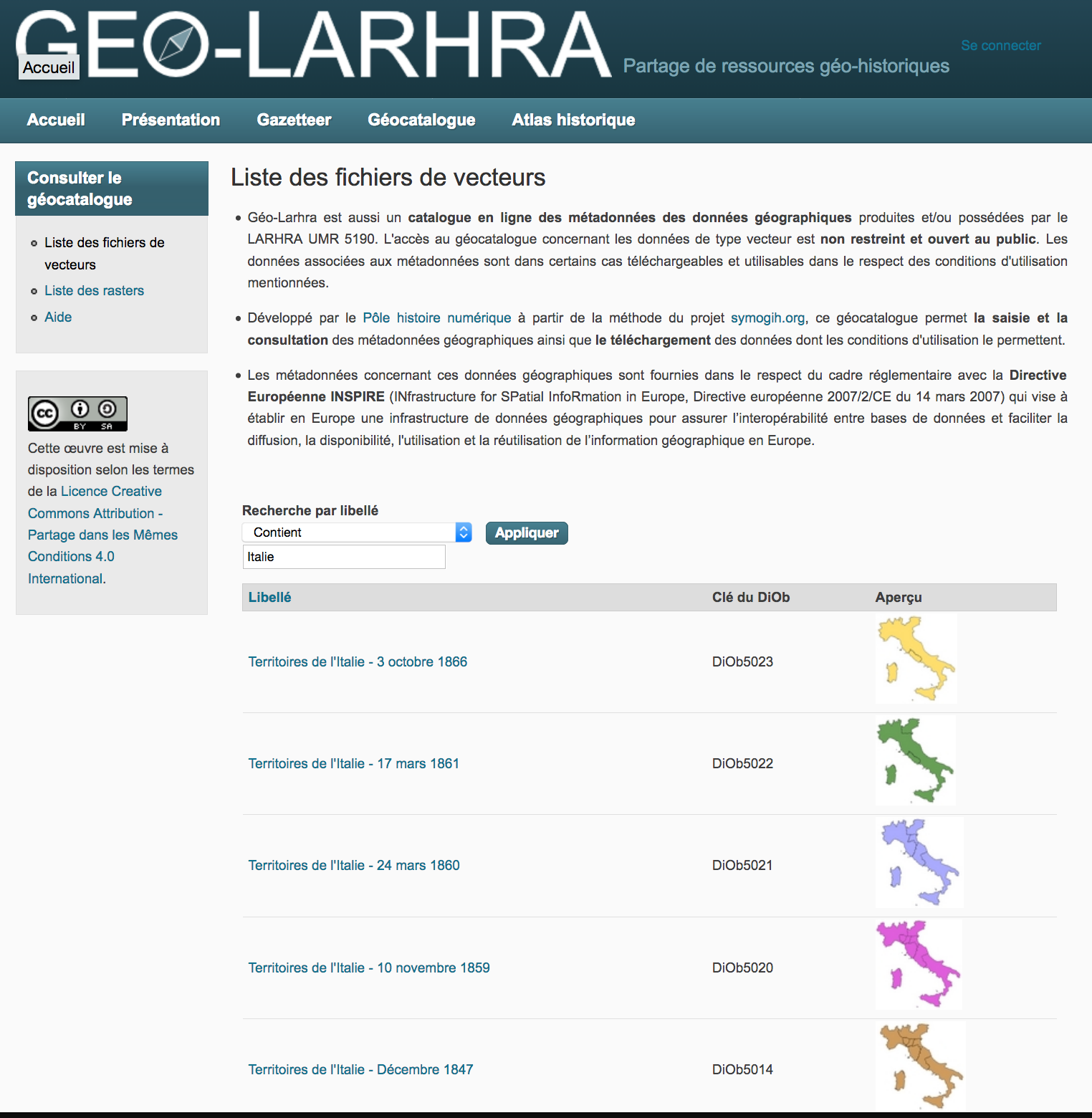Building a digital atlas of political territories
using
a CIDOC CRM compatible ontology
Francesco Beretta
with the participation of
Claire-Charlotte Butez et Djamel Ferhod
Laboratoire de recherche historique Rhône-Alpes
(UMR5190 CNRS – Université de Lyon)
ICHG Warshaw 2018
Presentation's steps
- A digital research environment for geo-historical research: the symogih.org project
- Interoperability of historical data: the Data for history consortium
- A digital atlas of political territories
- Desired features
- Building a collaborative gazetteer: the identity of geographical places
- Modelling the historical evolution of places and their representations with geometries
- Producing data
- Conclusion
symogih.org: a collaborative digital environment
for historical research
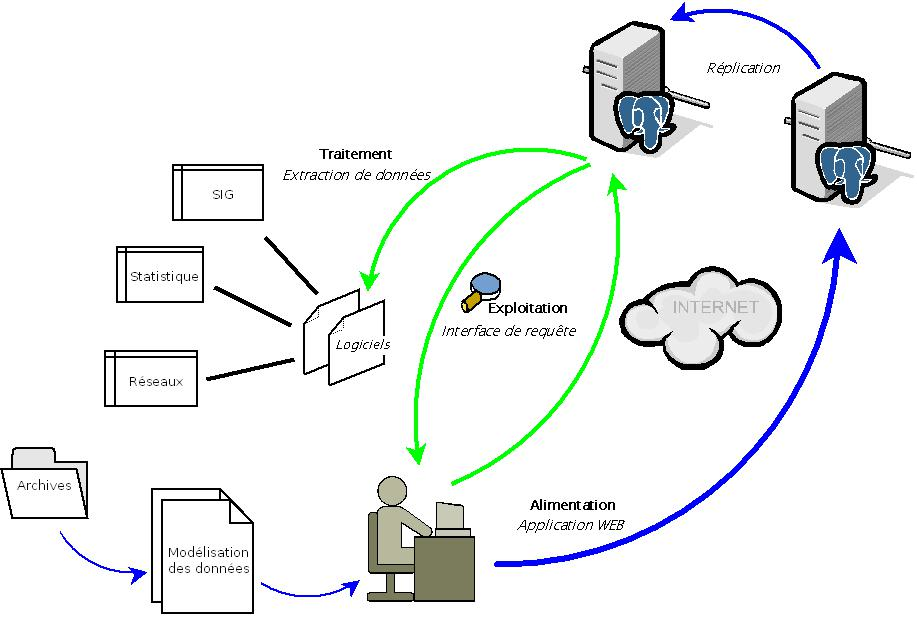
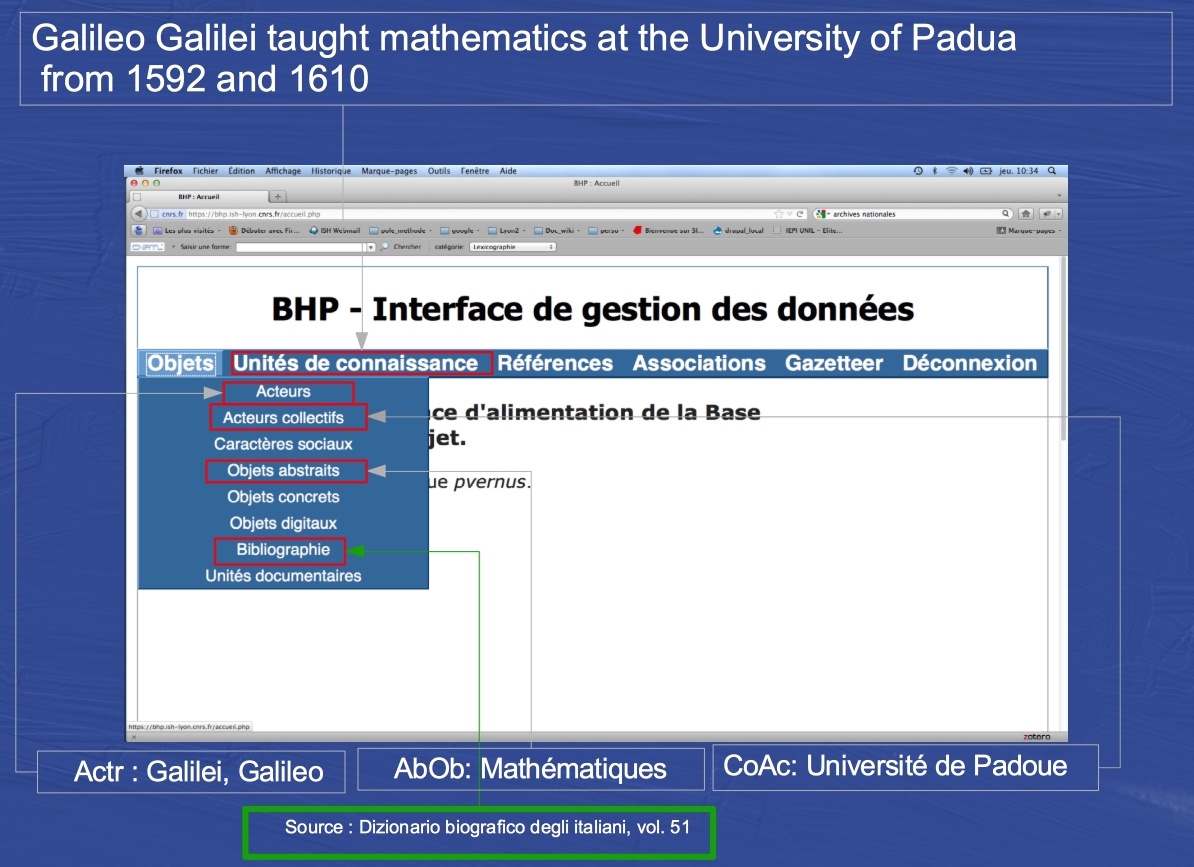
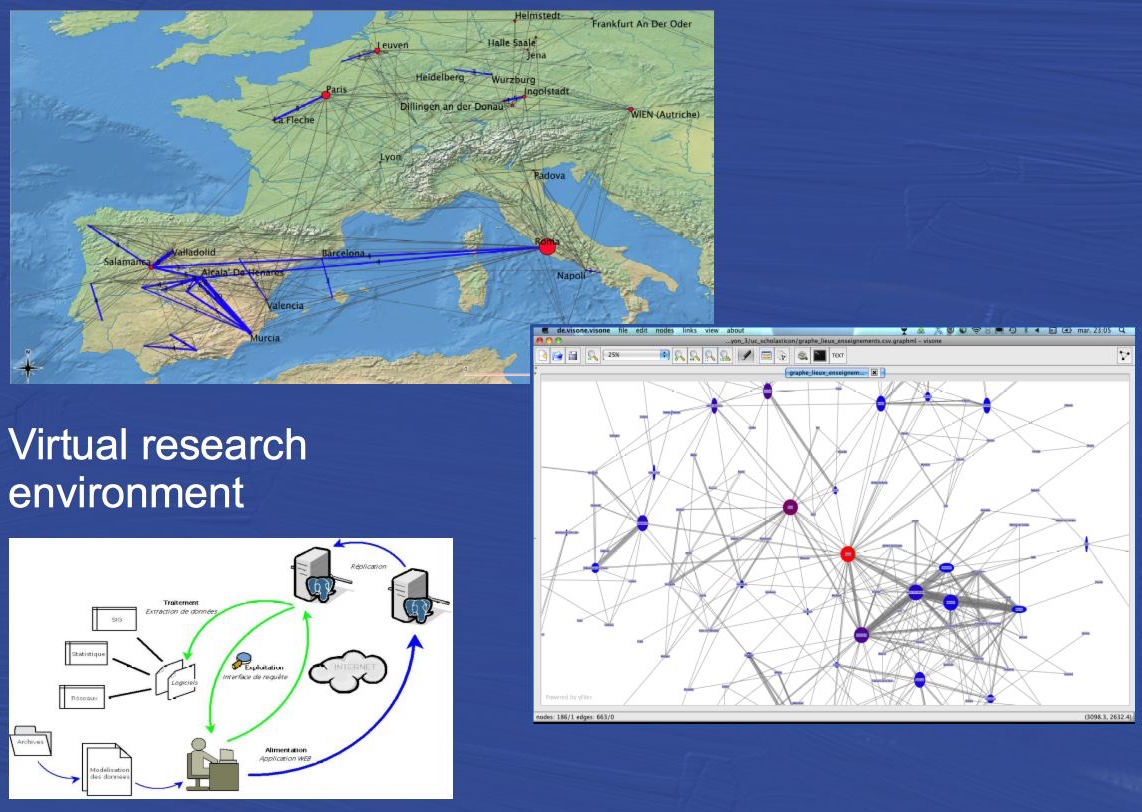
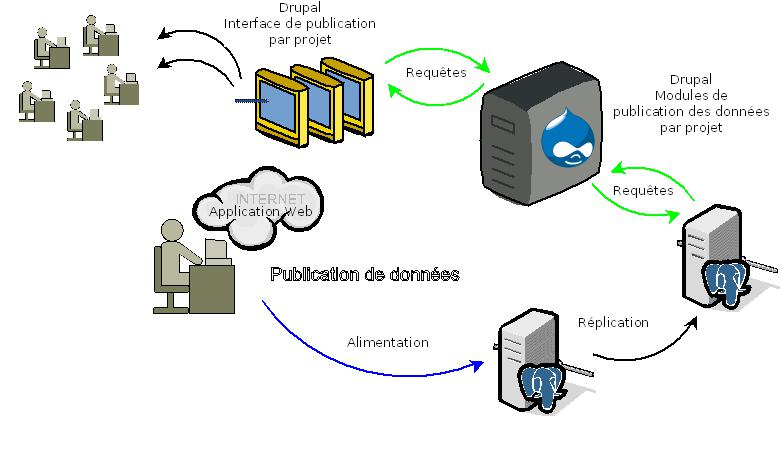
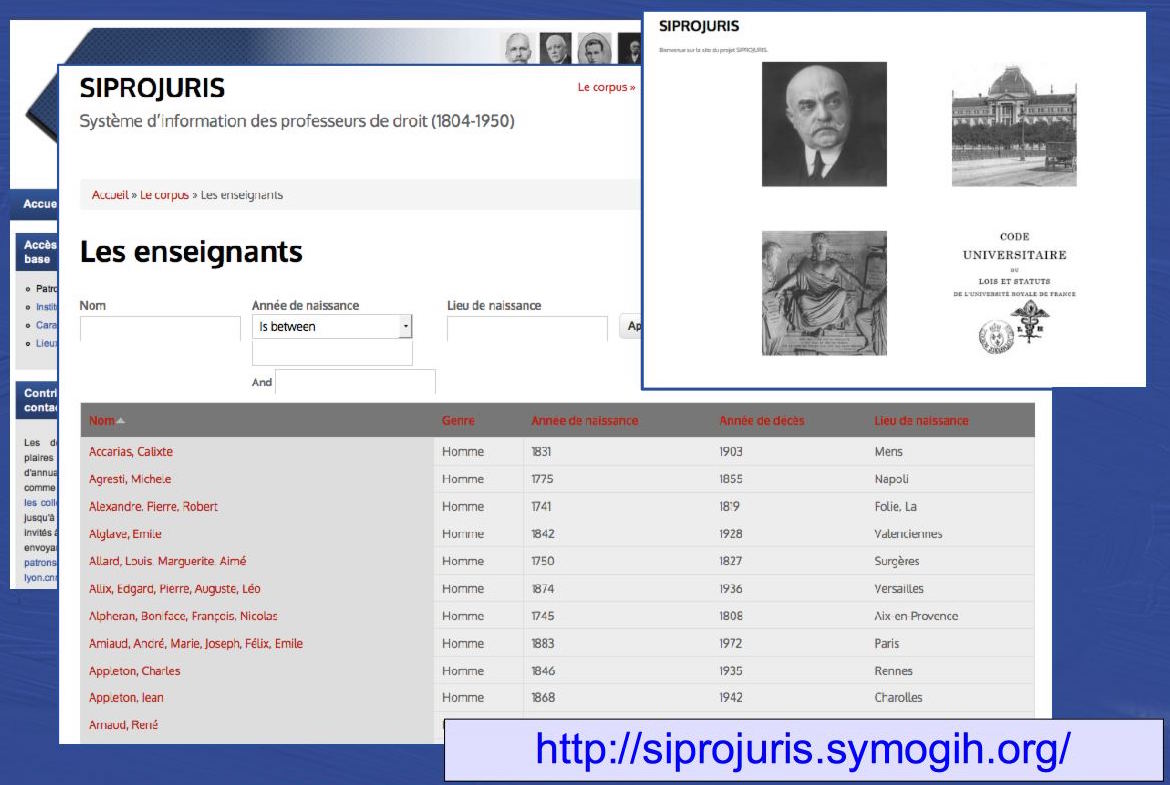
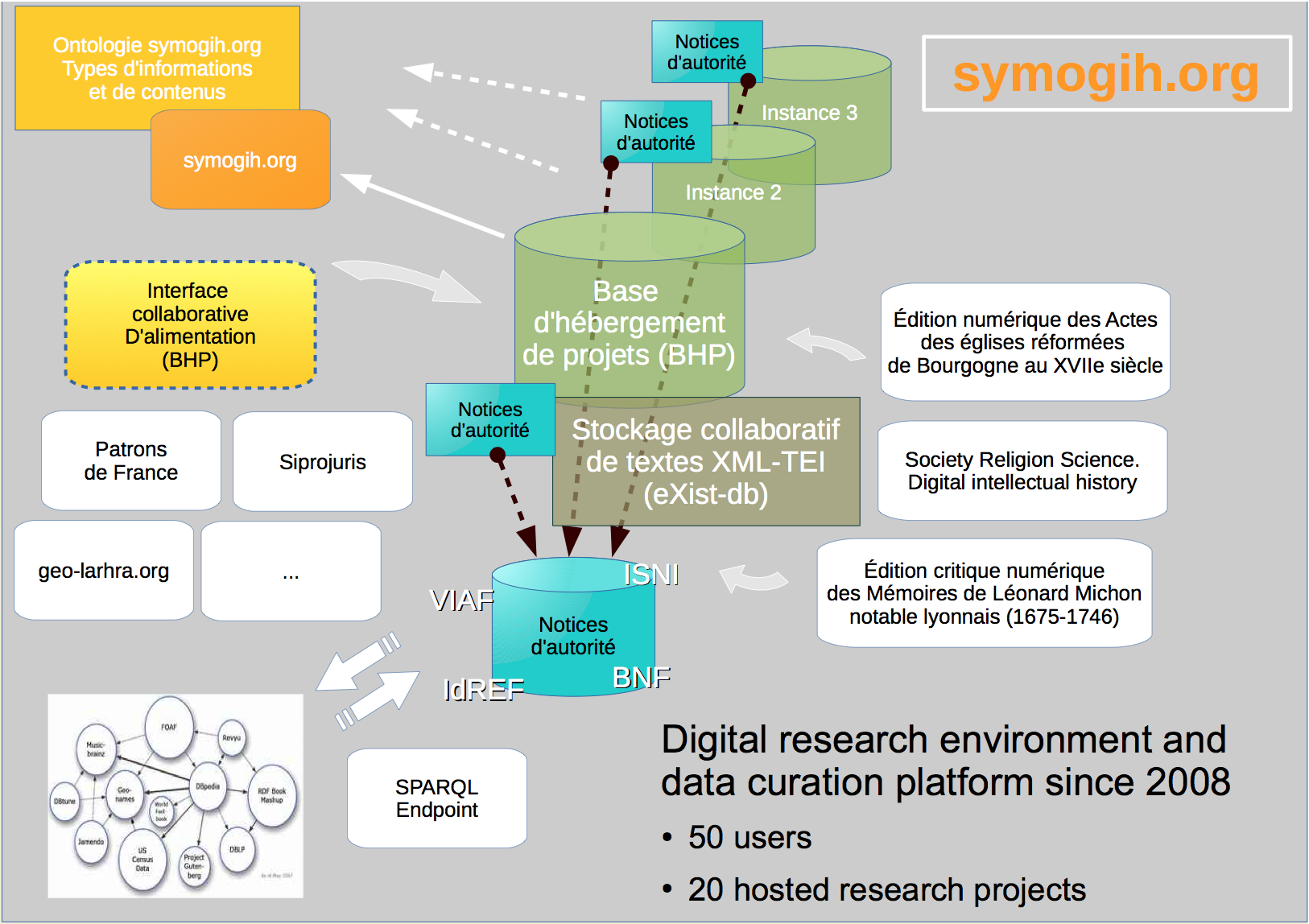
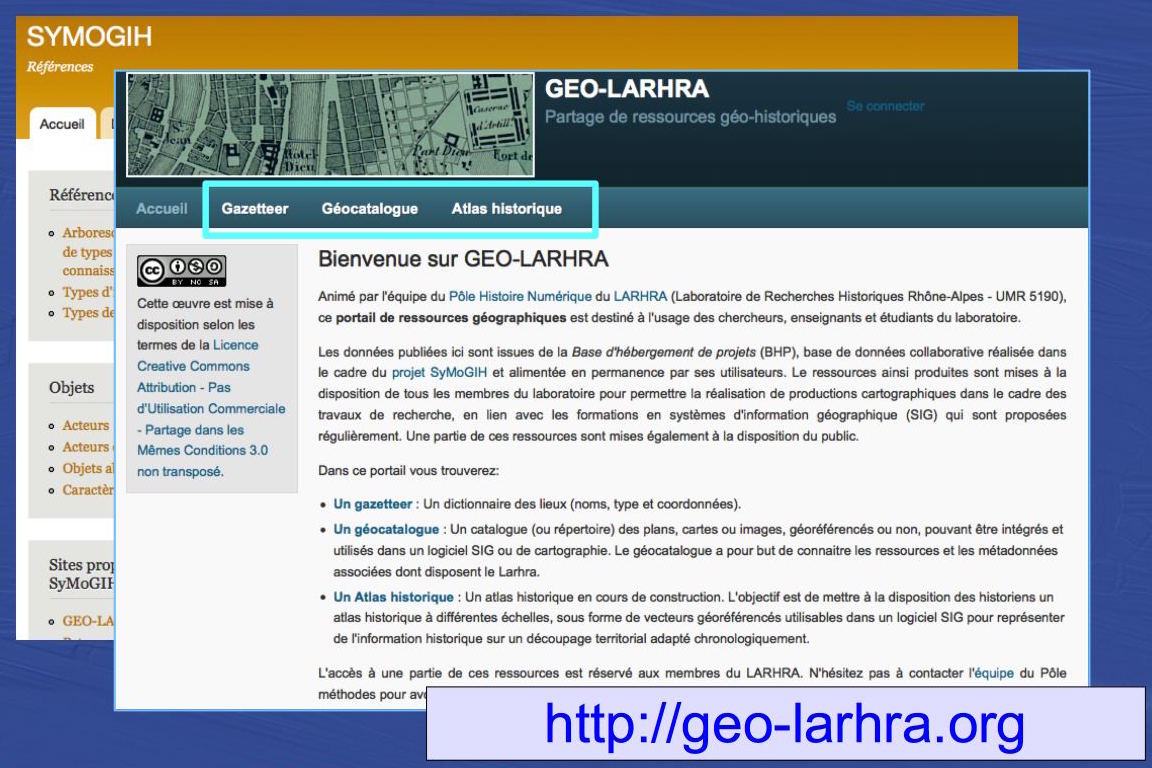
Interoperability of historical data:
the Data for history consortium
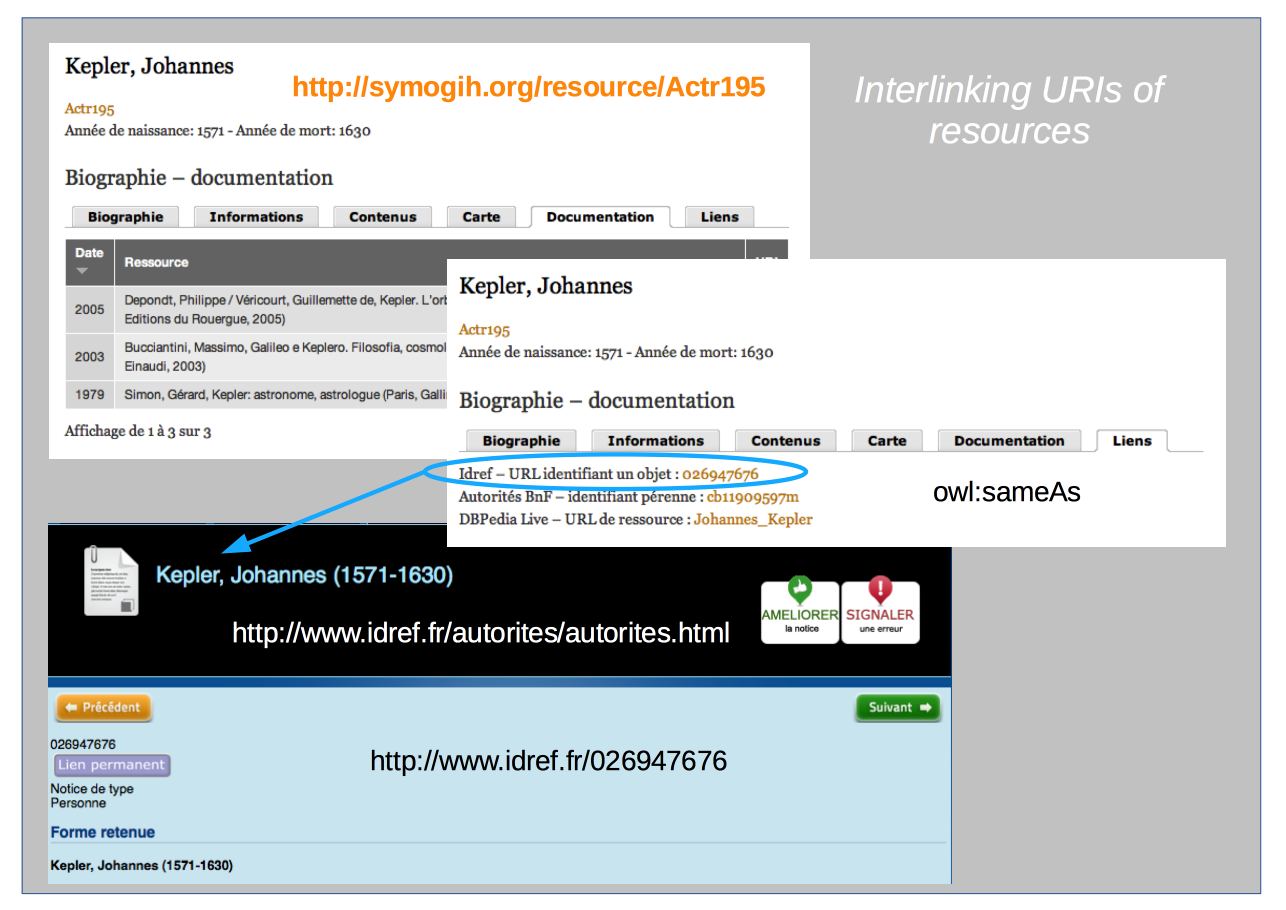
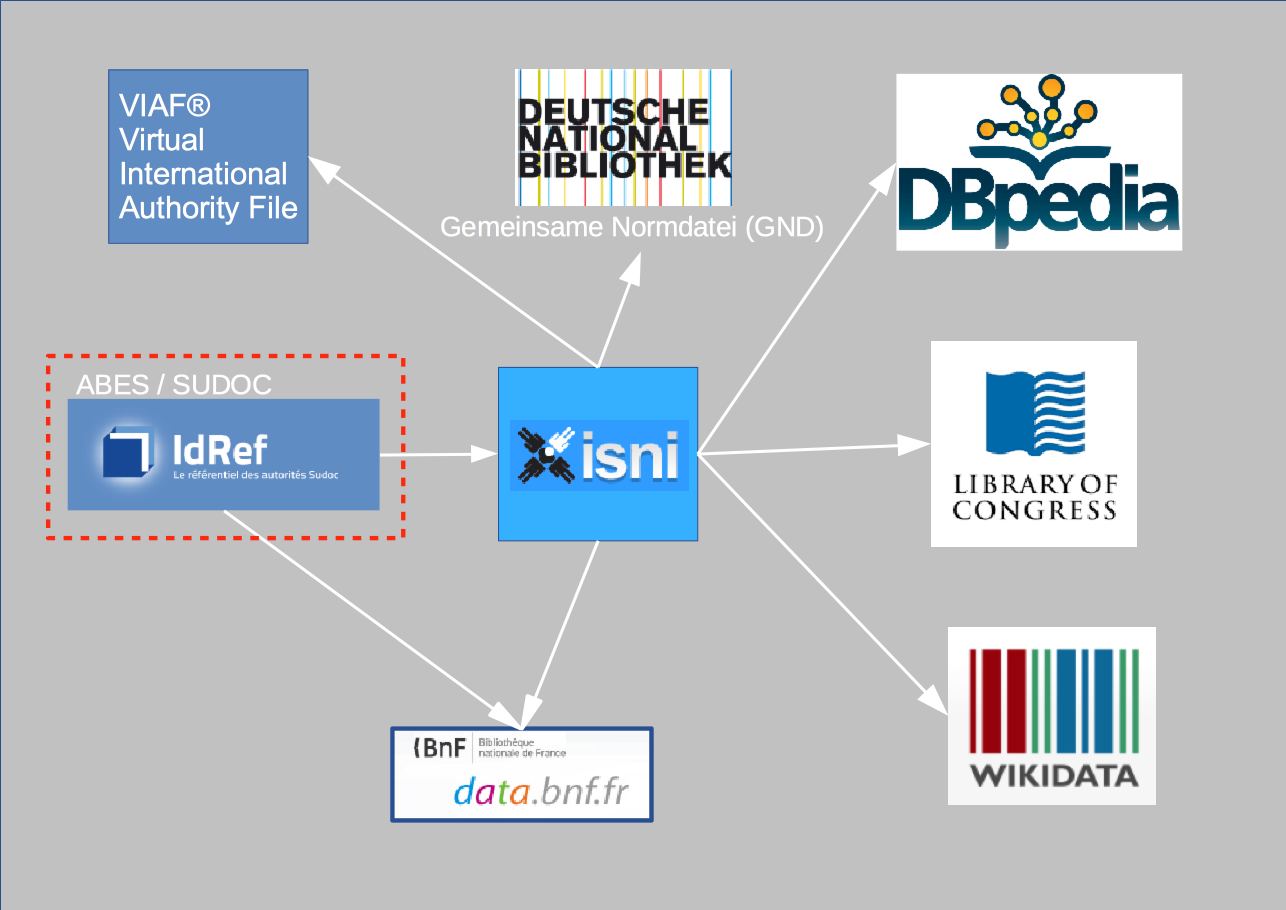
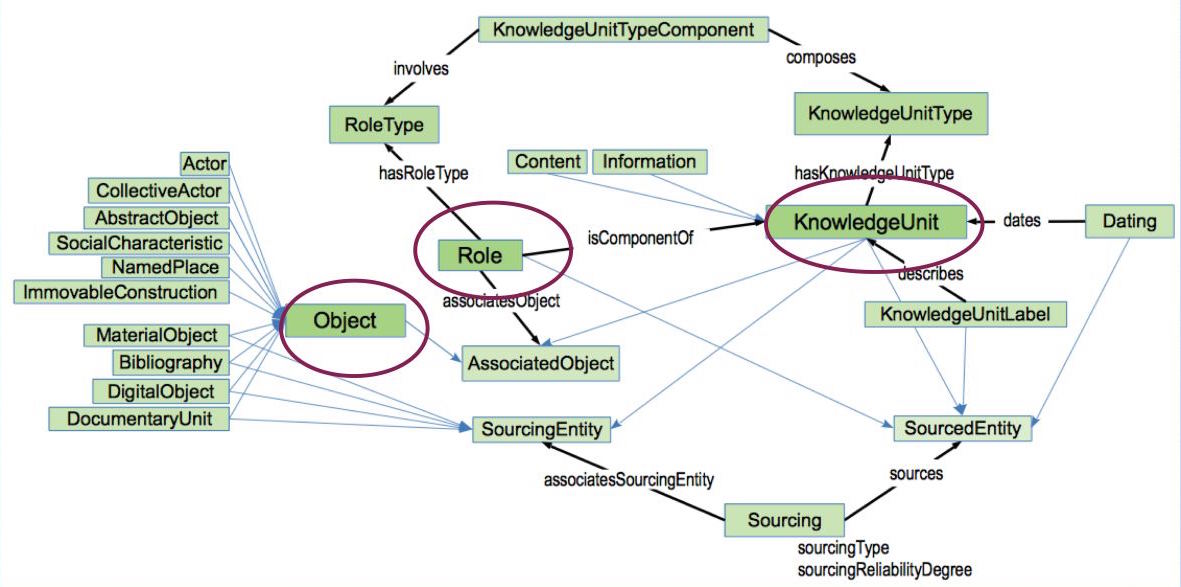
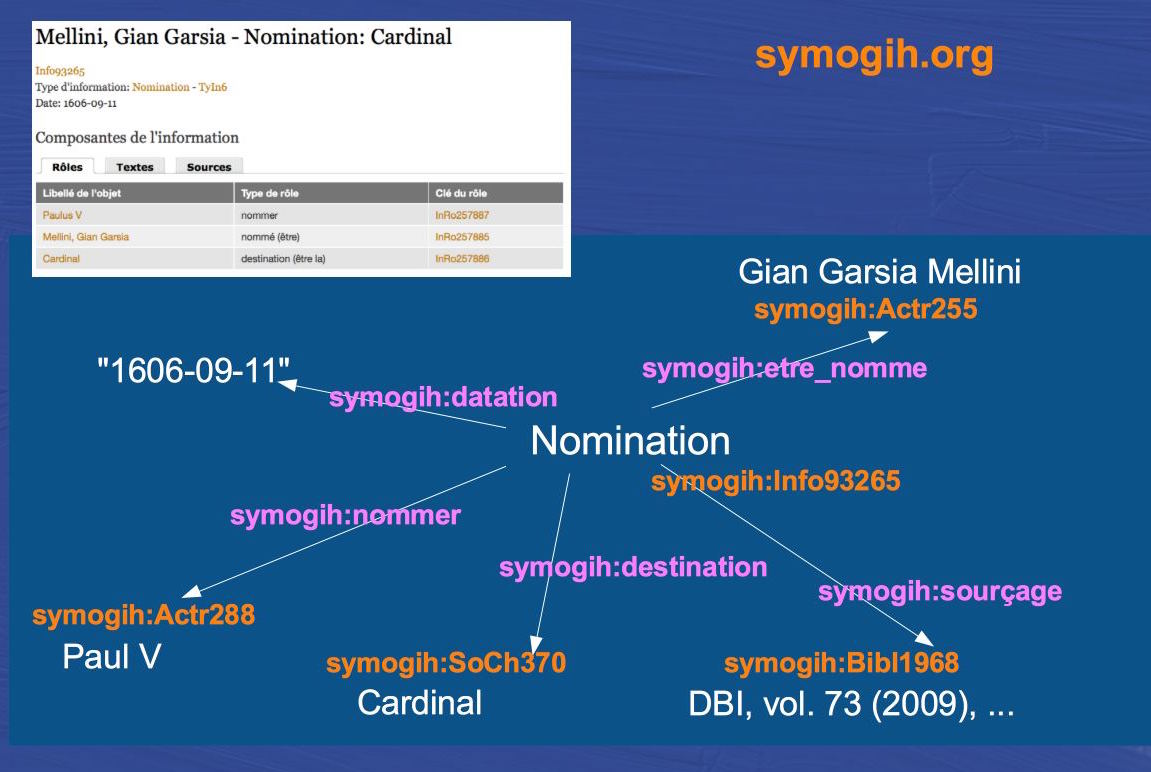
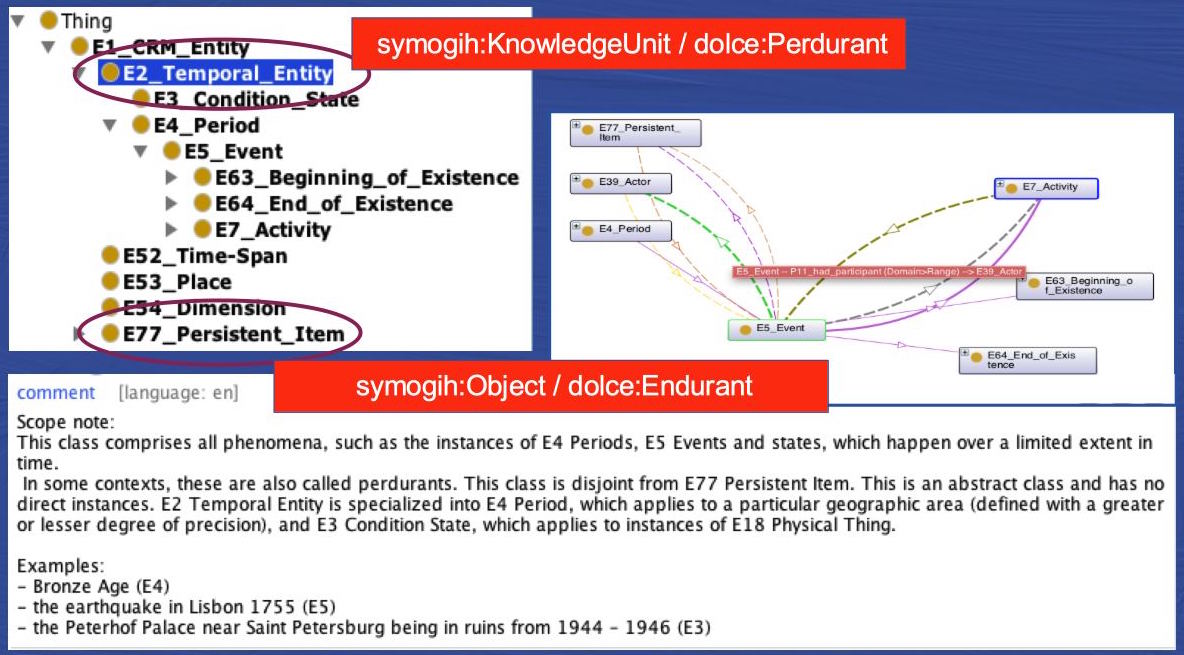
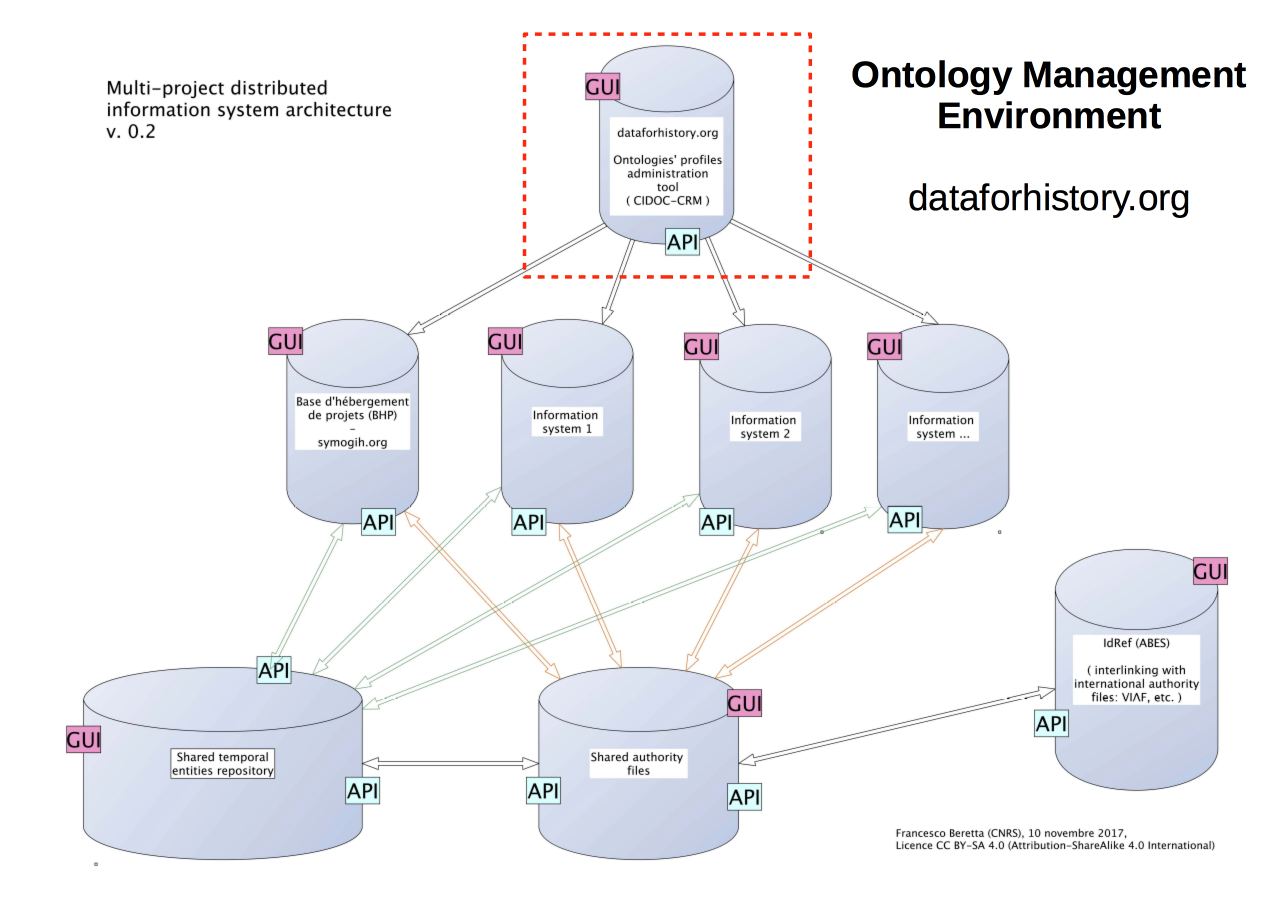

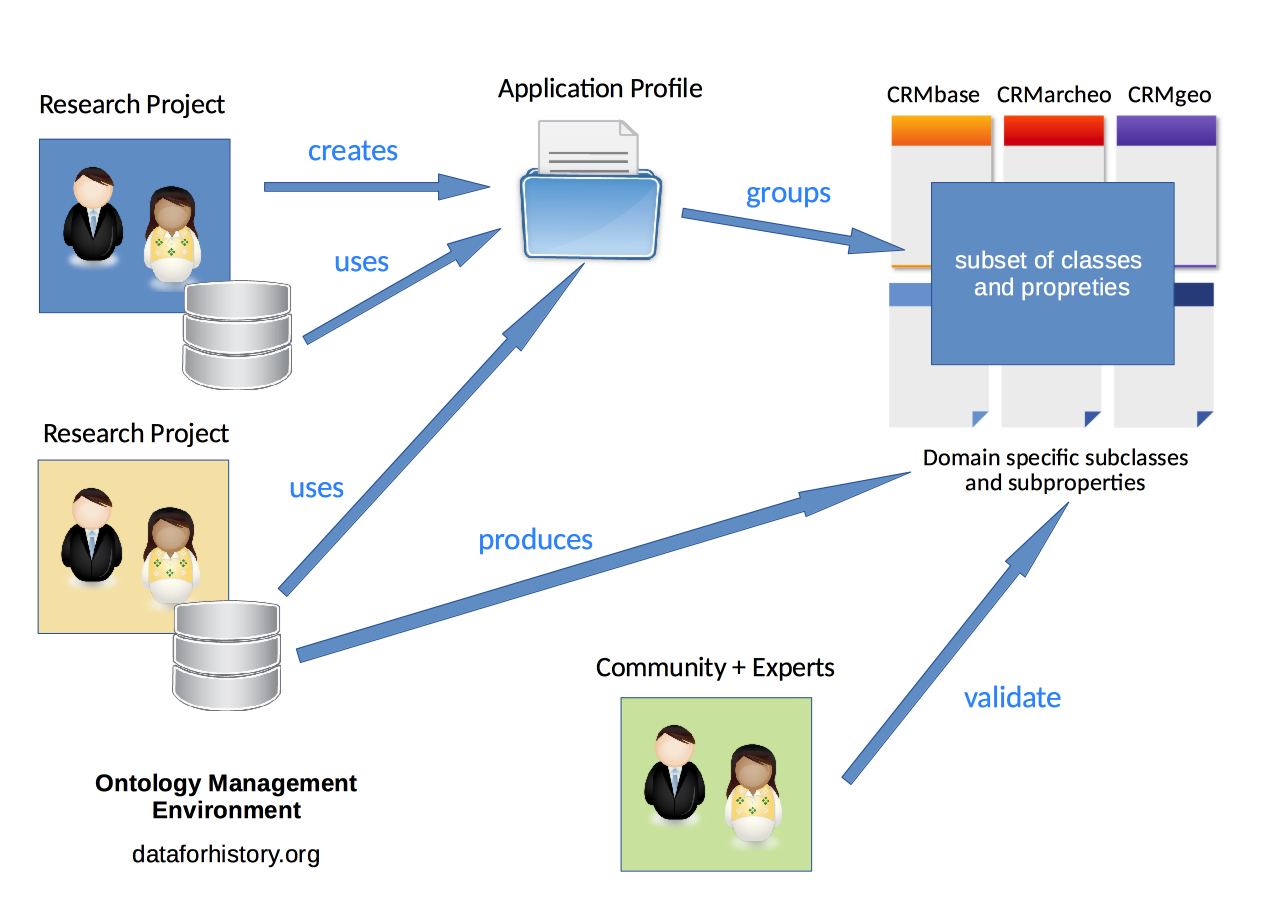
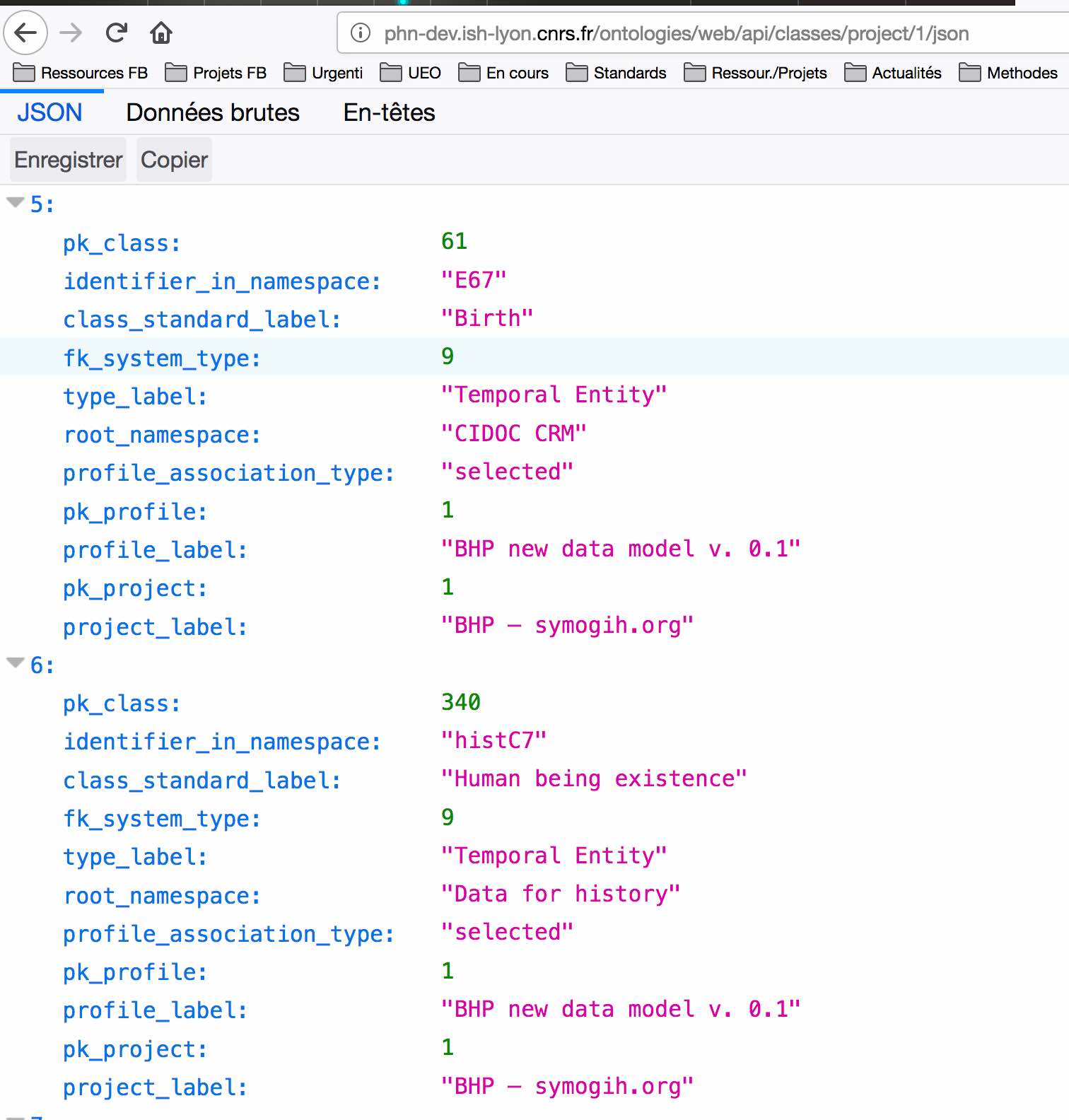

A digital atlas of political territories
1. Desired features
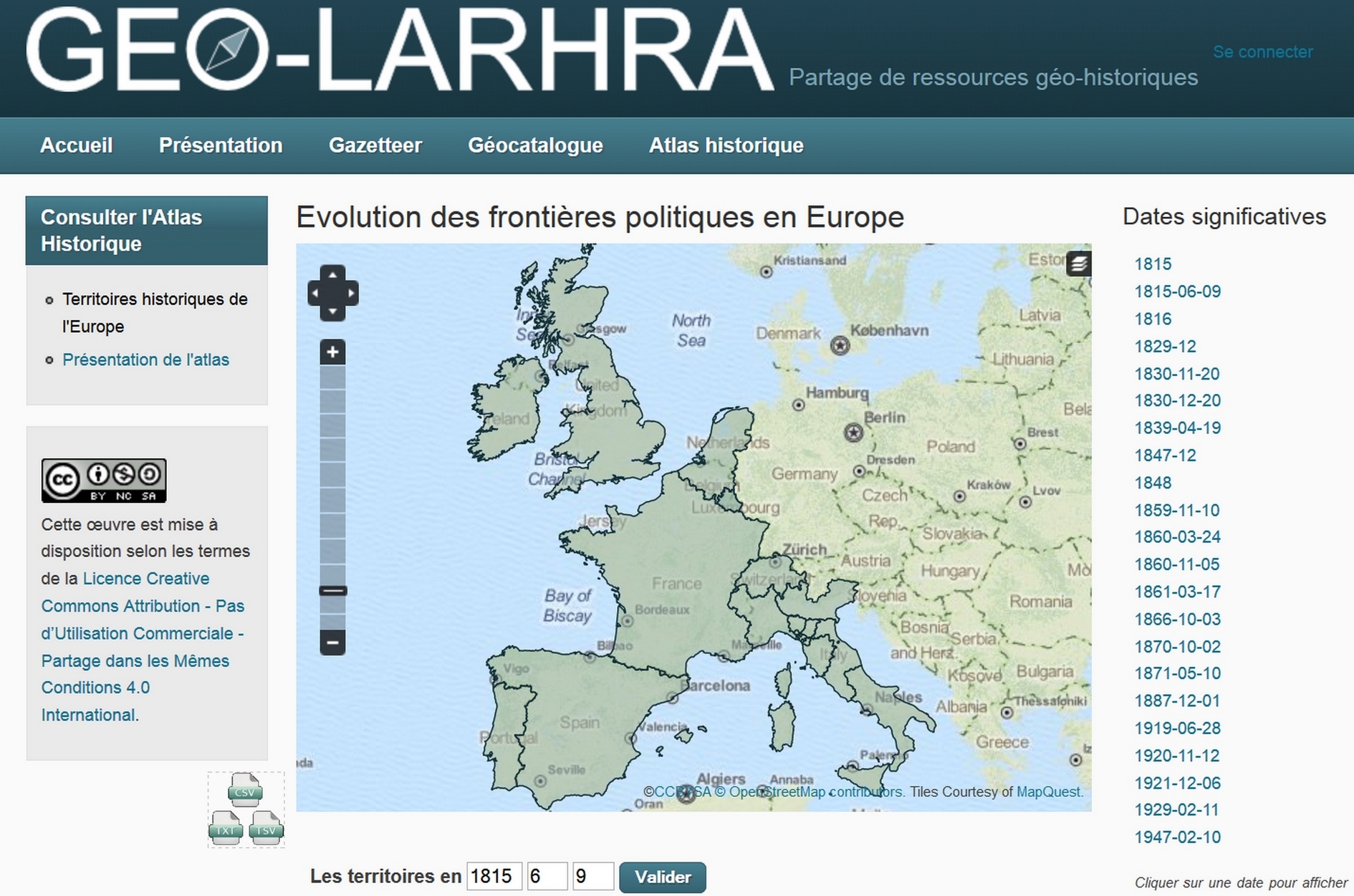
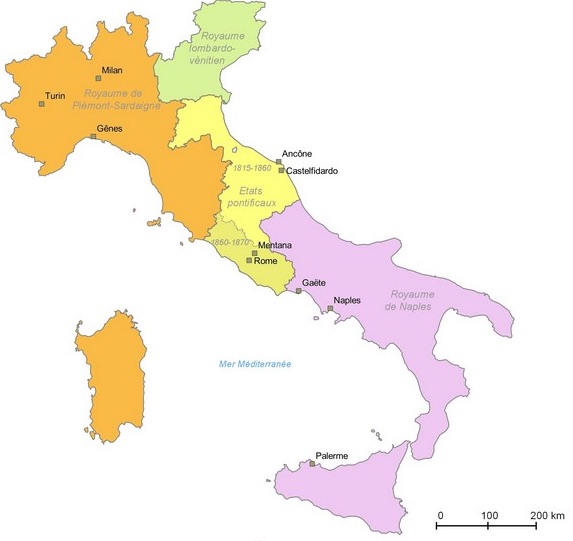
Historical georeferenced maps adapted to the period under consideration
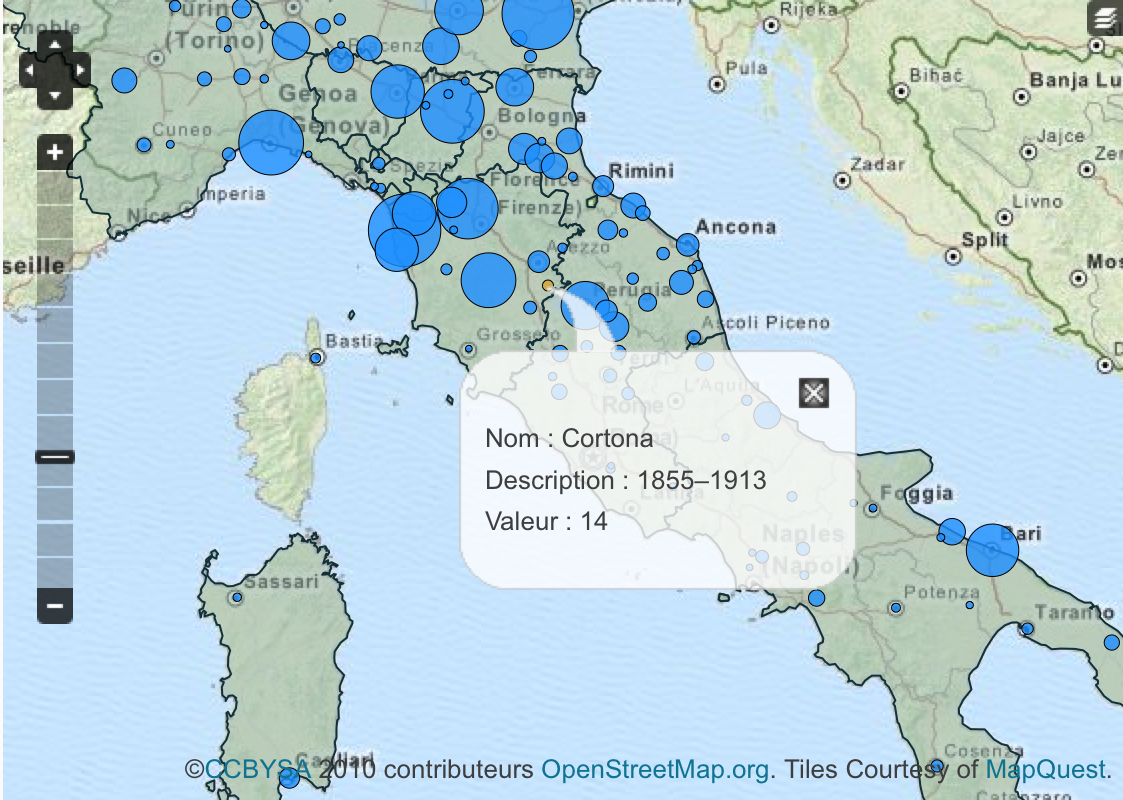
Good quality georeferenced maps which can be used for spatial analysis
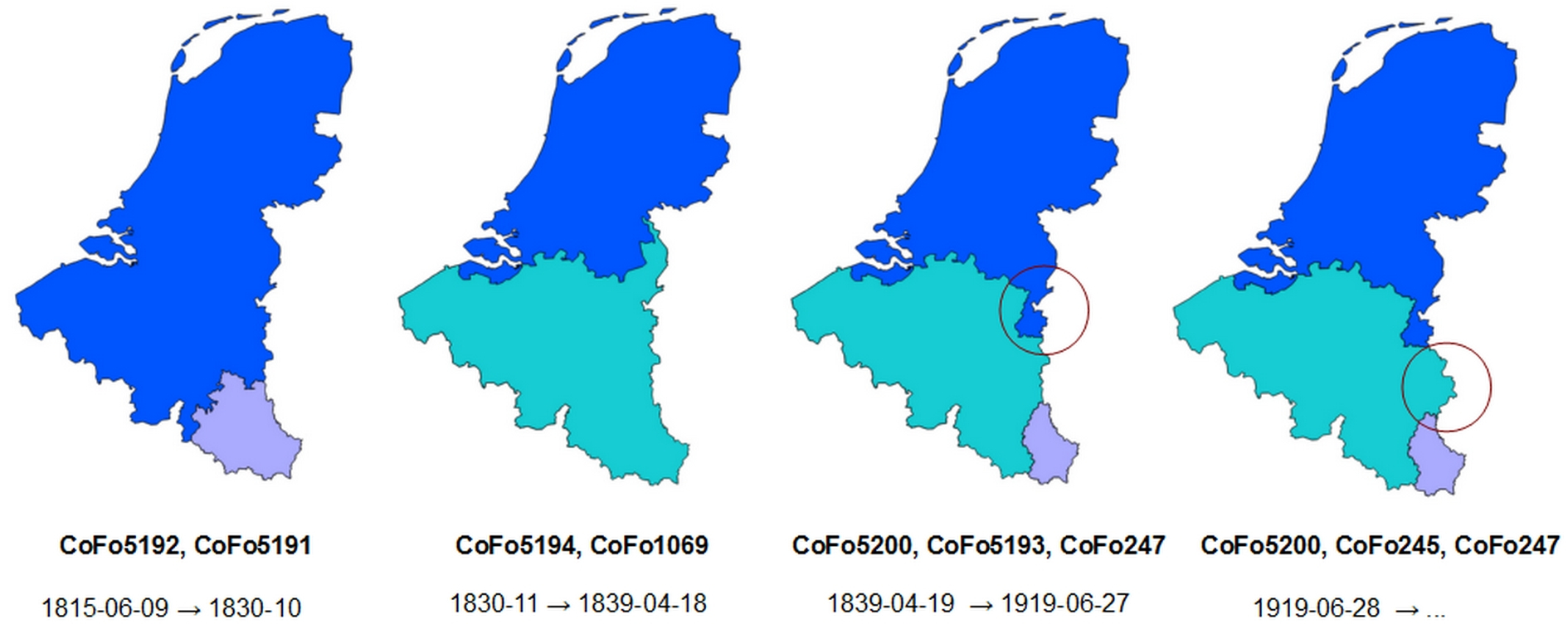
Spatial data representing the historical evolution of territories
A digital atlas of political territories
2. Building a collaborative gazetteer:
the identity of geographical places

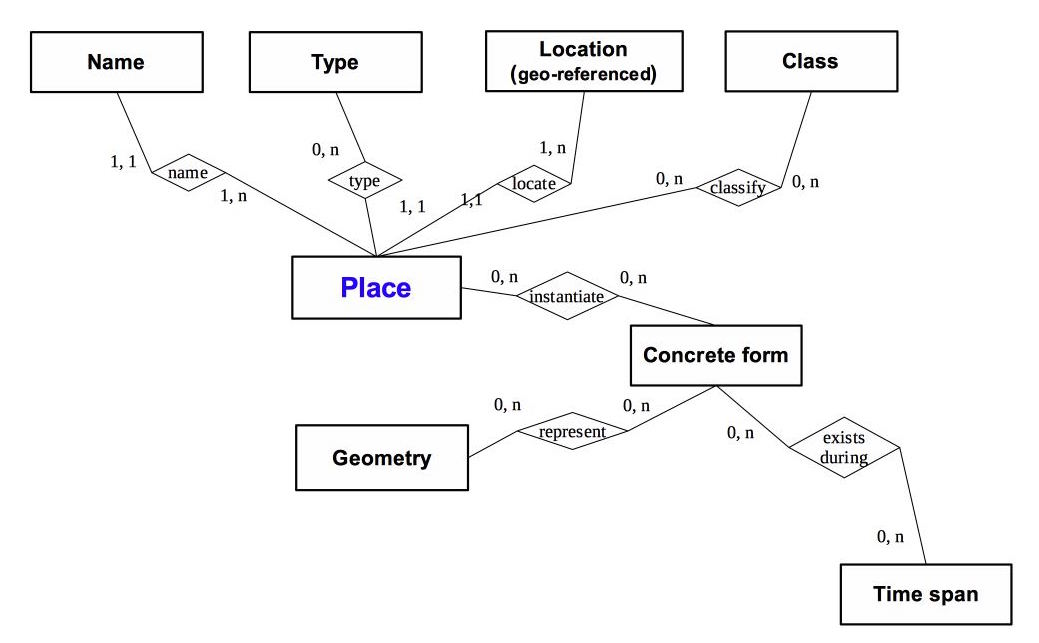

A controlled vocabulary for place types:
Getty Art and Architecture Thesaurus
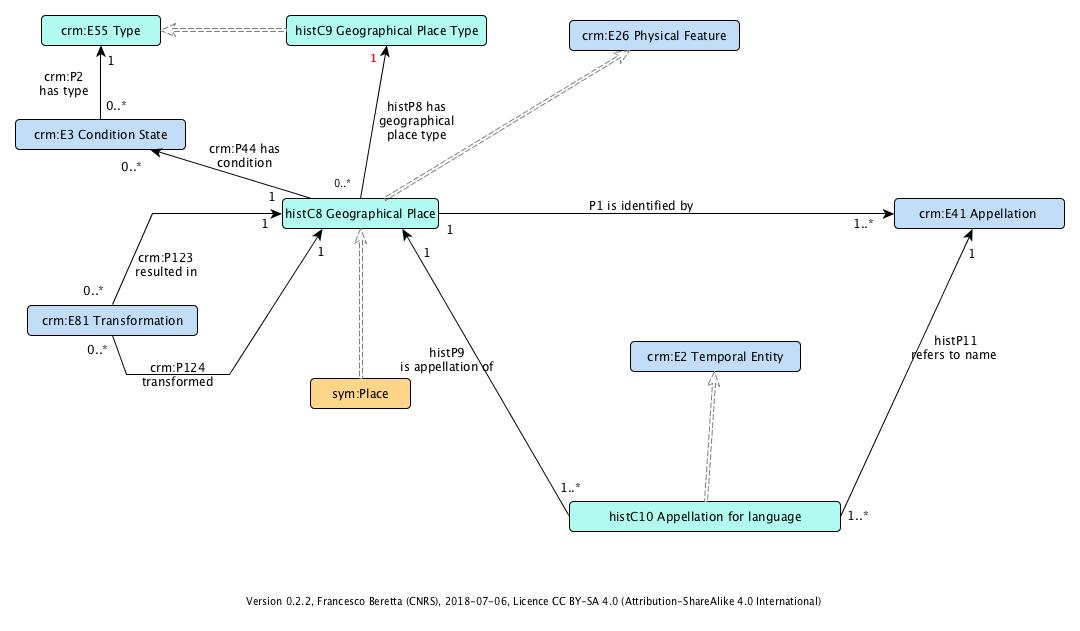
A digital atlas of political territories
3. Modelling the historical evolution of places and their representations with geometries

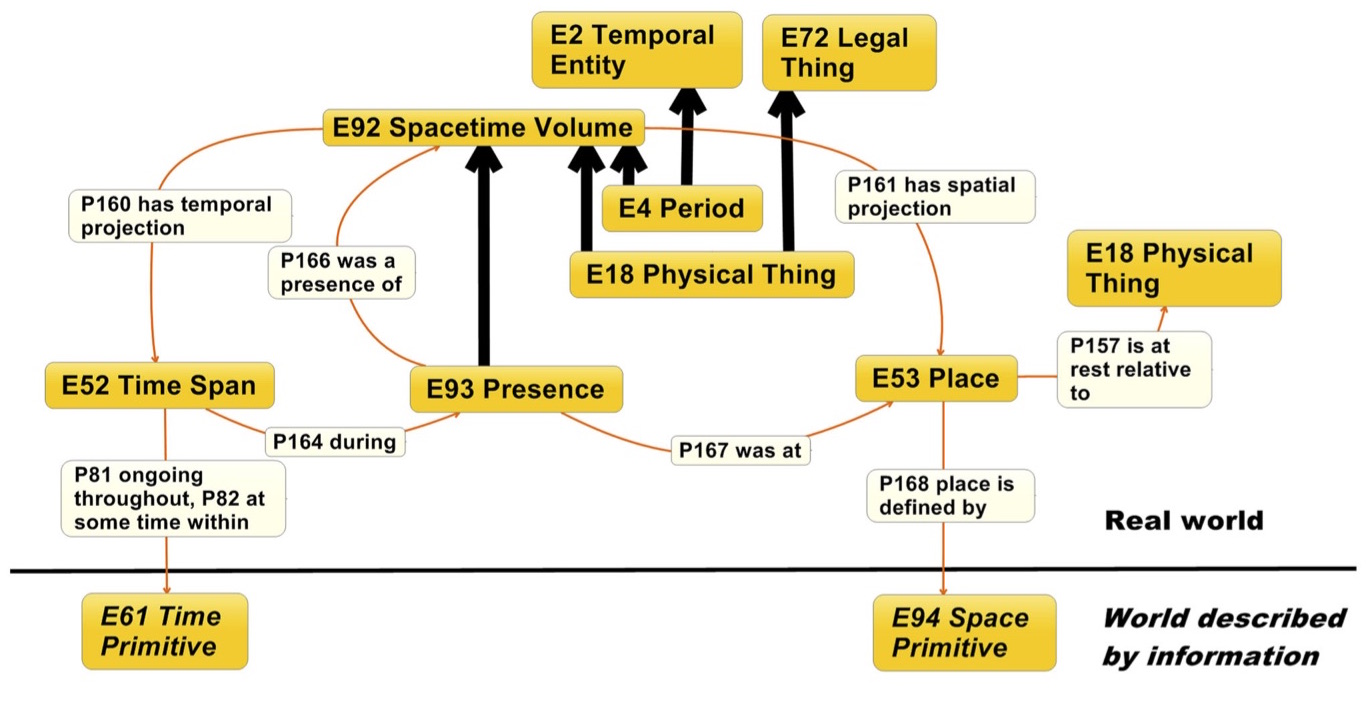
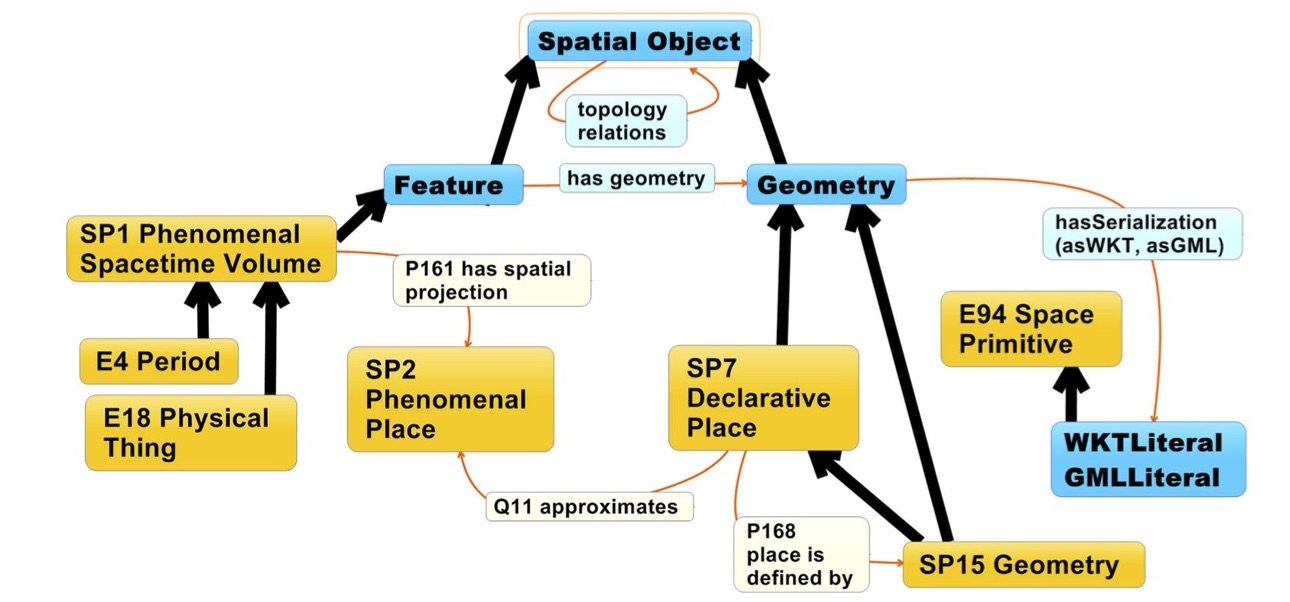
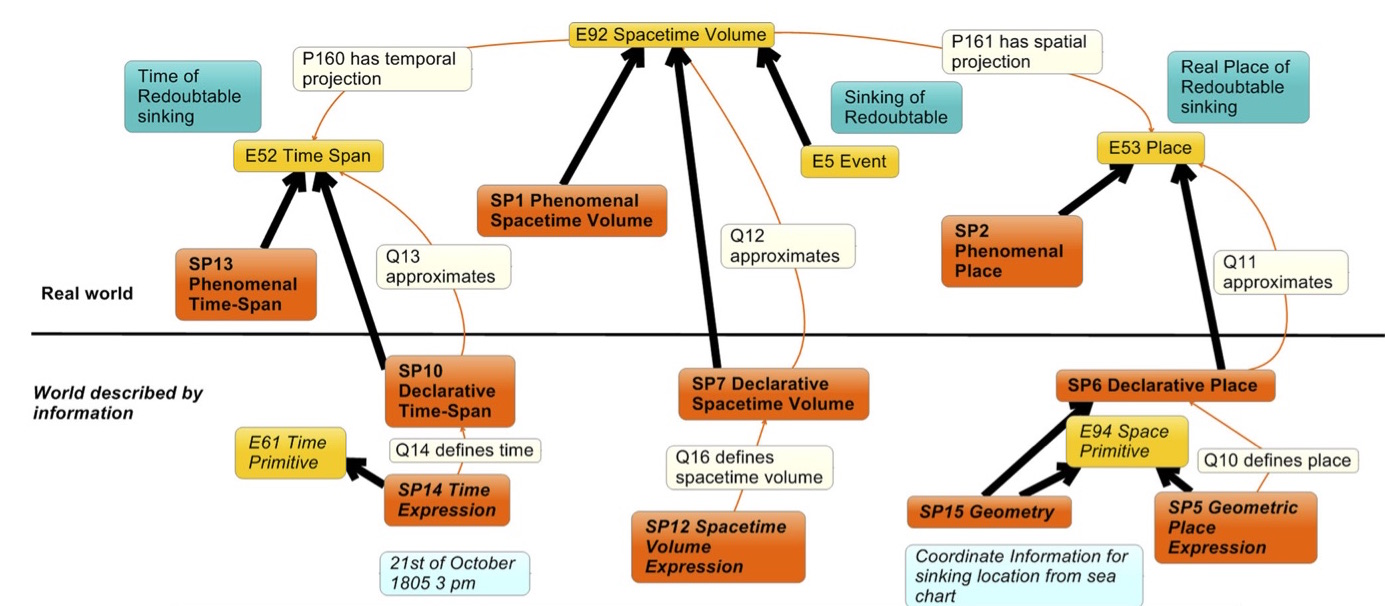
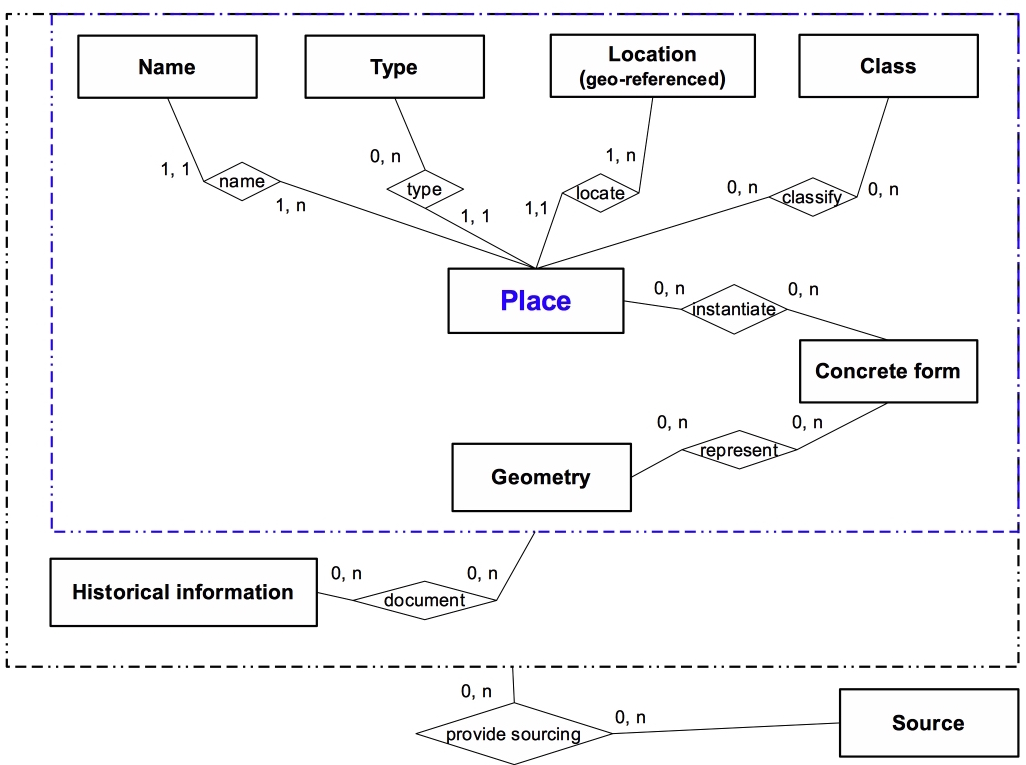
The historical evolution of territories is handled in the ontology
Historical relationships among places, and/or among collective actors and places
are modelled
in the ontology
independently from the representation of places using geometries
"Types of information" (Temporal entities' classes – 'events'):
Type of information "Incorporation of
territory" (rattachement de territoire)
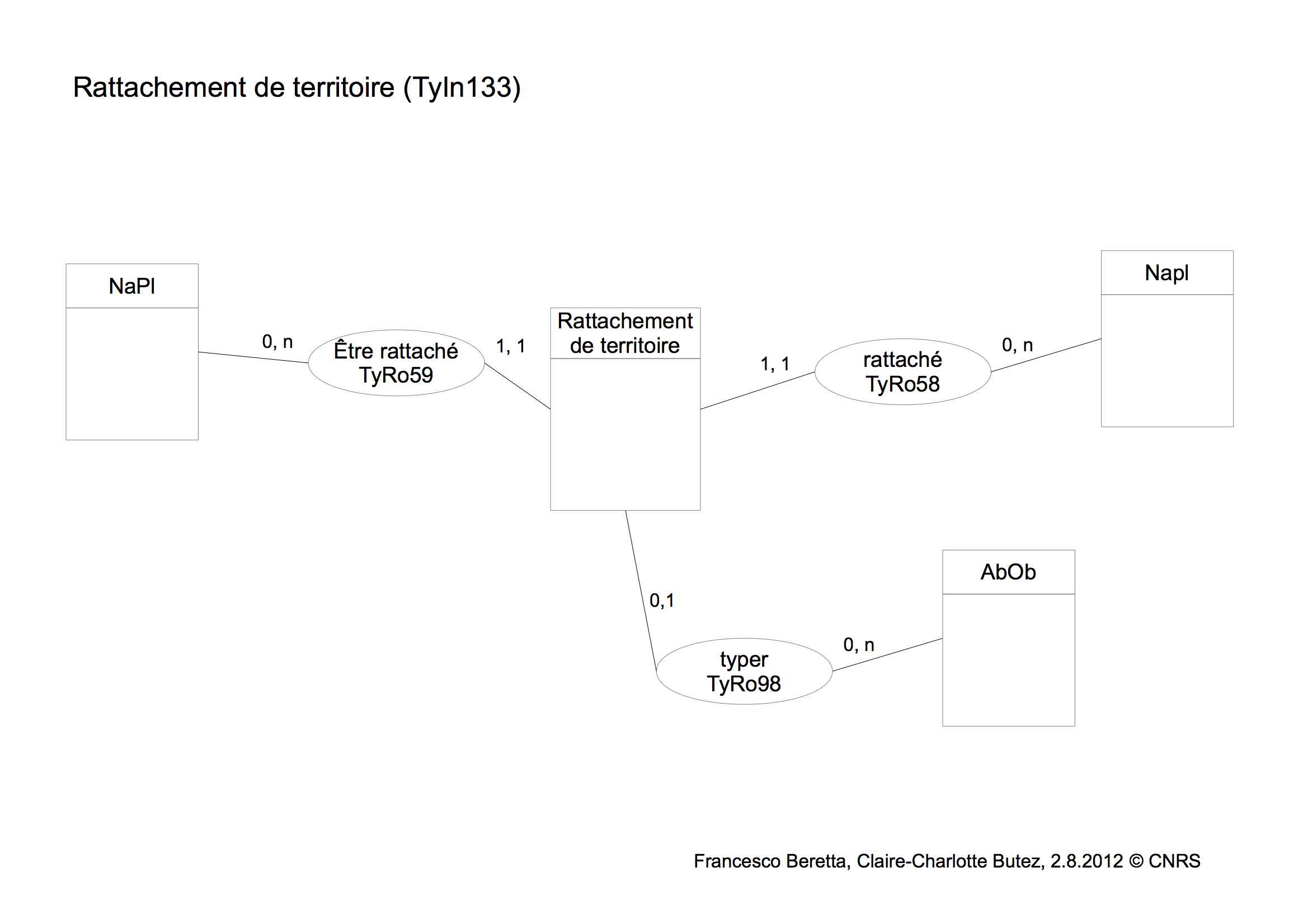
A digital atlas of political territories
4. Producing data
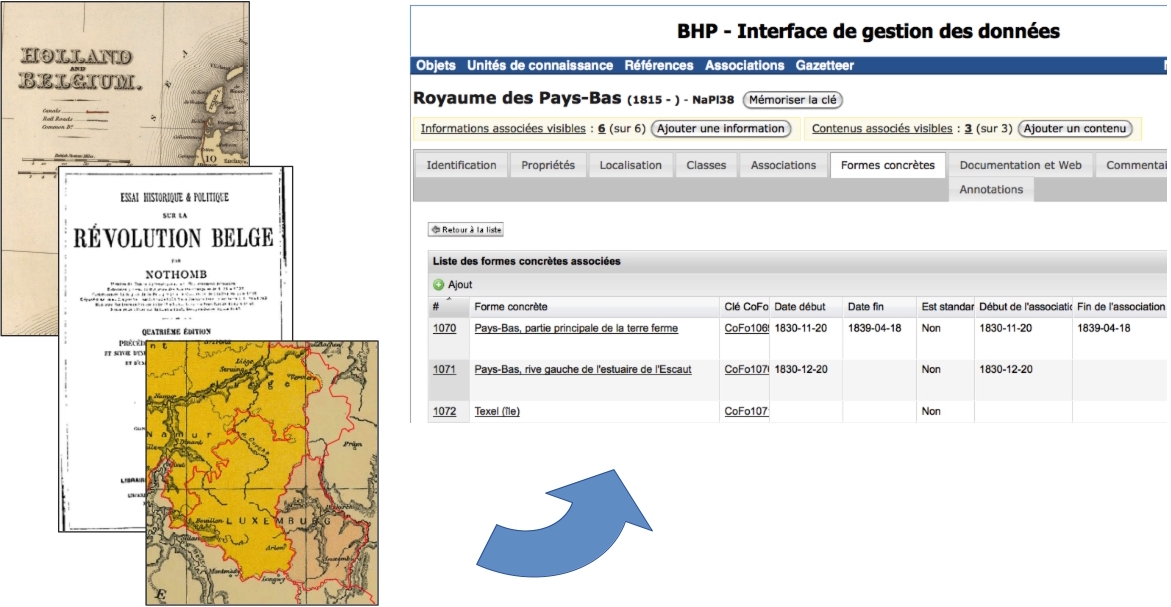
Territories' evolution is first addressed in ontology
Then geometries are produced
The issue of choosing the most appropriate scale:
- Time scale: precision to the day
- Spatial scale: inhabited places and significant natural
features are inside the correct political territory (B.)
![]()

The historical evolution of territories is handled in the ontology


Evolution of Belgium's territory
(See the atlas)

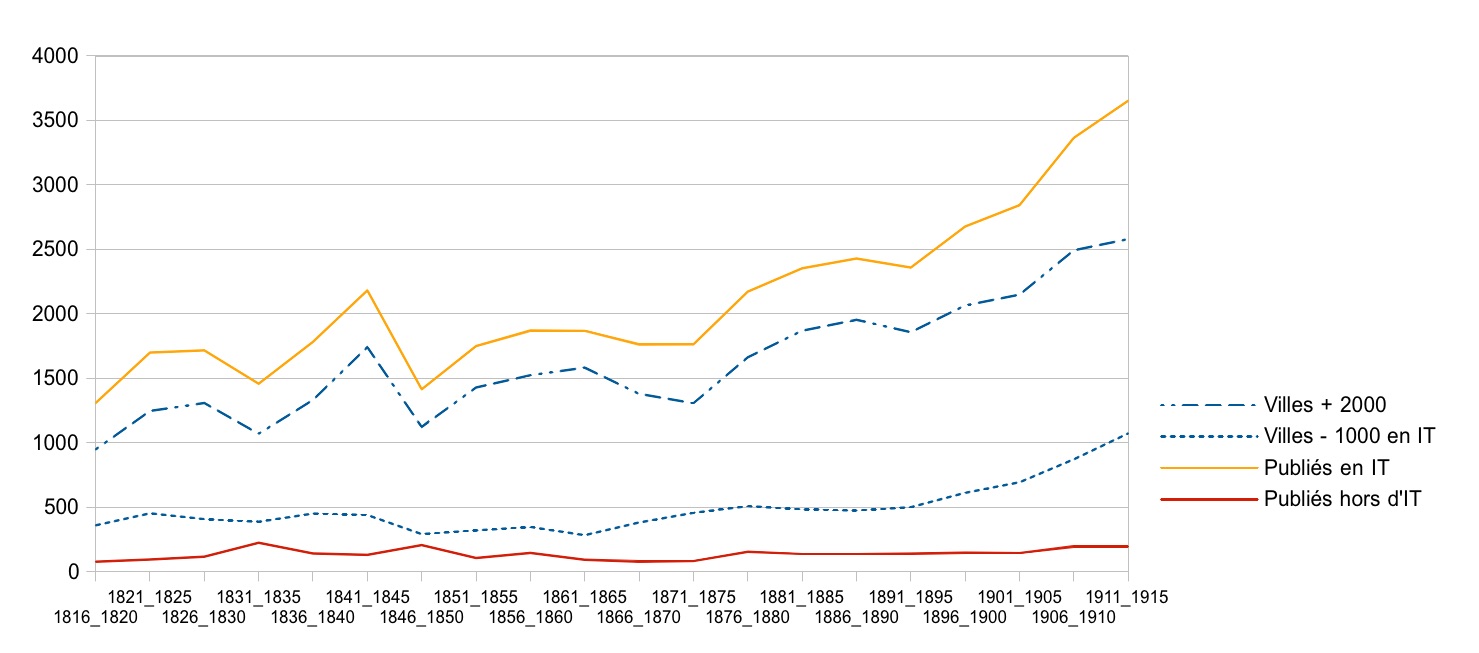
Conclusion
- Rewrite/republish the atlas' data according to the new model, including geometries and rich metadata: FAIR data.
- Produce new data or find partners interested in sharing this vision, and start together a new project
The End
or ...
... the beginning of

a new digital atlas of political territories.
